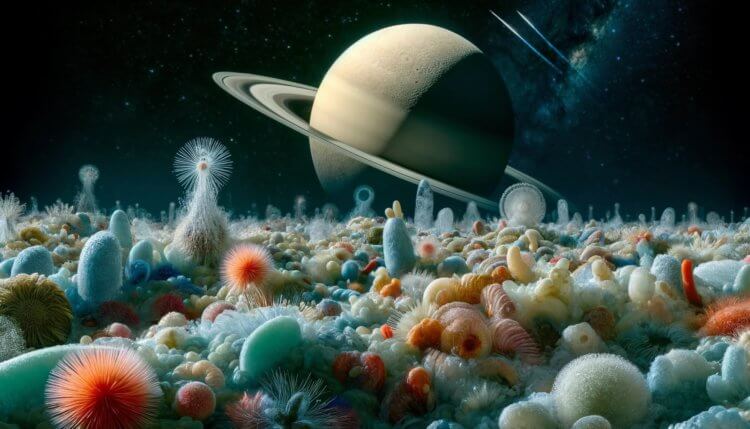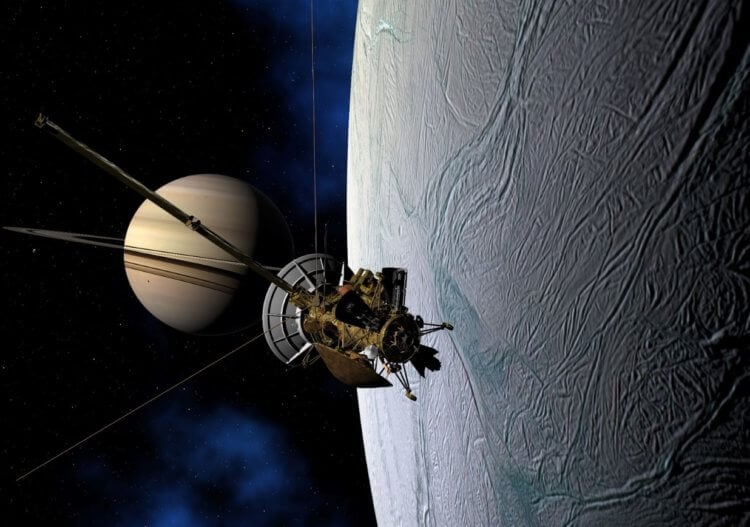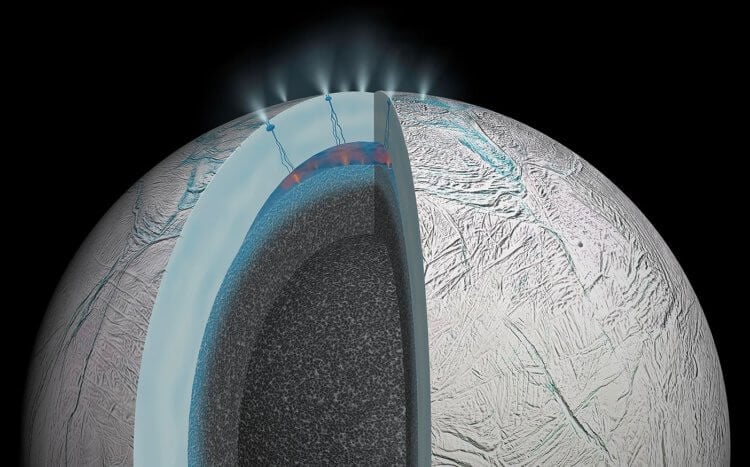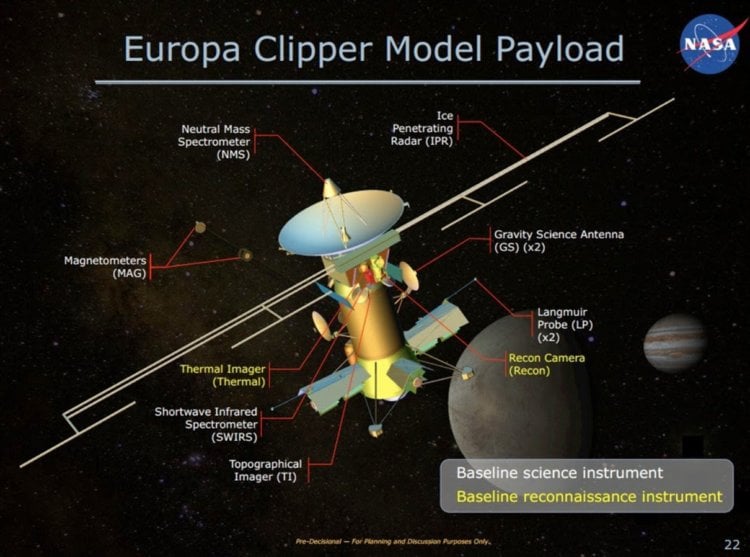The planet Saturn has 146 natural satellites, more than any other planet in the solar system. The most interesting of them is Enceladus, which was discovered back in 1789 and remained poorly understood until the 1980s. Only when the Voyager spacecraft approached it were scientists able to estimate its diameter, which is only about 500 kilometers. In the course of further research, it was found that under the surface of the satellite there is a huge ocean of liquid water with a rich set of chemicals. Today, scientists believe that Enceladus is the most likely place for extraterrestrial life to exist. Read our article, and you will also have no big doubts about this.

Microbial life may exist on Enceladus, and scientists have less and less doubt about this
Contents
- 1 Enceladus is the sixth moon of Saturn
- 2 Composition of the ocean on Enceladus
- 3 How to find life beyond Earth
- 4 Study of Enceladus and other moons
li>
Enceladus is the sixth satellite of Saturn
From 2004 to 2017, the planet Saturn and its natural satellites were studied by the Cassini spacecraft. Thanks to his work, it was possible to learn not only about the features of Saturn’s rings, but also details about the satellite Enceladus.

Cassini apparatus near Enceladus. Image source: slsc.org
At its south pole, astronomers have found many geysers that emit gas and ice grains from ocean water into space. Initially, the directors of the Cassini mission did not know about these geysers and did not even think that they would want to study the substances escaping from them. Fortunately, Cassini was equipped with a dust analyzer, which was able to tell a lot of interesting things about the composition of the ocean under the surface of the satellite.
Read also:The abundance of gases on Enceladus is “free food” for life. But is there life there?
Composition of the ocean on Enceladus
A dust analyzer has shown that the ocean beneath Enceladus is very similar to Earth's oceans. Its water contains a lot of sodium chloride, better known as table salt. It also has many carbon-based compounds that produce energy inside the satellite. Liquid water, carbon-based chemistry and released energy are key ingredients for life, which is why scientists believe Enceladus could be home to microbes.

The satellite Enceladus and its geysers. Image source: ixbt.com
On top of all this, in 2023, scientists discovered traces of phosphate on Enceladus. This is the name of a form of phosphorus that is critically necessary for all life on Earth. It is an integral part of the DNA of all living organisms, cellular structures, and bones. This was the first time in the history of science that scientists discovered phosphate under the surface of a satellite of a completely different planet.
Article on the topic:Enceladus has all the conditions for the origin of life
How to find life beyond Earth
Based on all of the above, scientists believe that Enceladus is the best place to search for extraterrestrial life. During an experiment conducted in 2024, scientists made an important discovery. Experience has shown that the presence of life in the waters of the satellite can be proven using dust analyzers.
The experiment involved scientists injecting a drop of water into a vacuum that contained tiny Sphingopyxis alaskensis bacteria. On Earth, they live in the sea waters of Alaska, and potential life on Enceladus may well be similar to these microbes. As it turns out, improved dust analysis machines can easily detect bacteria even if only 0.01 percent of the constituents of a single cell are present in water droplets.

Scientists already know how to find microbial life on Enceladus. Image source: nutrition.org
The Cassini spacecraft's dust analyzer was not so powerful, but scientists want to send a new space probe with more sensitive equipment to Enceladus.
You may be interested:A new way to search for aliens has been found beyond the solar system
Exploring Enceladus and other moons
In 2022, NASA announced that Enceladus is the second top target for future missions. Only Uranus, the seventh planet of the solar system, has a higher priority for study.

The study of Enceladus is an important goal for NASA. Image source: sputnik.by
Also in the future, astronomers want to more carefully study other satellites whose surface contains liquid water. This is Europa, a satellite of Jupiter, which may also have geysers that eject water into space. In October 2024, scientists want to send the Europa Clipper apparatus to this satellite. He will only be able to reach his goal in 2030, but the wait is worth it. Engineers have equipped it with a powerful dust analyzer, so that extraterrestrial life may be detected first on Europa, and not on Enceladus.

Europa Clipper spacecraft. Image source: nasa.gov
Stay up to date with everything happening in space exploration. Subscribe to our Zen and Telegram channels!
The search for extraterrestrial life is one of the most important goals of modern scientists. Despite all our efforts, we have only found hints of the existence of extraterrestrial microbes, but there are still no traces of the presence of intelligent organisms. Maybe it’s for the better, because highly developed aliens can be very dangerous for us.